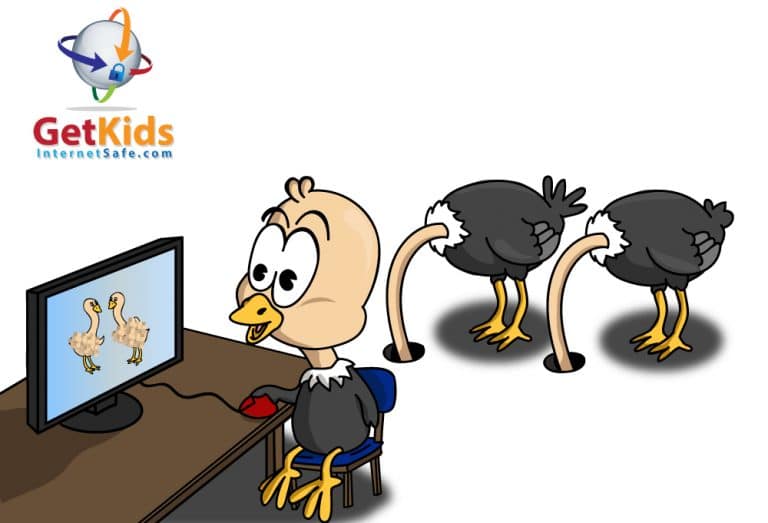
As a woman, a mother, and a psychologist who treats teens and teaches about addiction and eating disorders, I am profoundly aware of how our media-saturated sexualized world is affecting our kids and teens. From print ads to television to Internet browsing and social media, kids are bombarded with a range of sexualized images and videos that pose real danger to healthy emotional development. The question many parents ask me is “how big of an impact does sexualized media images have on kids?”
Research regarding impact remains unclear and controversial. However, it is clear that parents have a reason to be concerned. In graduate school I watched Jean Kilbourne’s groundbreaking Killing Us Softly series and learned how women’s bodies are objectified in ads. How marketers choose images of vacant-eyed models in need of a roast beef sandwich with extra mayo (and an IQ) posed in powerless positions, body parts lit, made up, and digitally manipulated to achieve an inaccessible fantasy. These images exploit sexuality for profit and strongly impact how we view others and ourselves. As empowered women, we want to be both intelligent and sexy, not somebody’s mindless object.
My proudest work has been mentoring young women to empower themselves and helping young men become insightful, strong partners. This blog is about our responsibility as parents to keep our children emotionally safe, which translates to educating, protecting, and supporting them along the way rather than abandoning them to be exposed to material they are not ready for or that is violent or frightening.
Keeping our kids safe sounds like an easy concept. And it kind of was when our homes provided sanctuary from dangerous others. But now with the Internet and sophisticated hand held devices, dangerous others can be seen and can view and converse with us at the click of a button. The sheer exposure from hours of daily screen time has more impact than ever. The Internet is a portal to real risk. There is no longer a doubt that this generation of children is viewing more explicit sexualized material at greater frequency than any generation before. Raising a child to 20 years old and still having two younger ones at home provides shocking illustration to us! Pretending this is not happening is not a solution. It is our obligation as parents to tackle the issue on several fronts.
GetKidsInternetSafe.com addresses safety in three ways:
- CONNECTING with your kids to provide ongoing education through factual, honest dialogue and a fun, trusting relationship,
- FILTERING unsafe material from reaching your kids in the first place, and
- PROTECTING your awesome, hard-earned connection and filtering throughout their development by transparently and consistently employing a safe and informed strategy that allows Internet exposure in responsible ways at the appropriate developmental stages.
*********
Let’s start the CONNECTION phase with a factual discussion about sex education. Parents get particularly fearful about how to manage sex education. They ask me: when should I start? What should I say? How much should I tell them? This is particularly challenging because as a society, we are chronically conflicted about female sexuality and power. With the simultaneous purity of youth and the seductiveness of Lolita, it is sometimes frightening to know how to talk to our daughters about their sexuality and its effect on others. And frankly we are not much better with our sons. How we can best lead them to healthy maturity?
In regard to formal sexual education, schools vary tremendously on what they teach, and some teach absolutely nothing at all! You may be shocked to know, for example, that only 19 states require sexual education that is medically and technically accurate. Teacher’s hands are tied; parents must provide the formal education (NCSL, par. 4).
Beyond school intervention, how do our kids get information outside the home about sexuality? The Internet.
87.5% of Americans under the age of 25 years old have access to the Internet (US Census Bureau 11).
And news for the naïve, a 2006 college survey of 563 students revealed that 93% reported exposure to Internet pornography before the age of 18, with the first exposure being on average 14 years old (Sabina, Wolak, Finkelhor 2).
That means kids are being exposed to factual information that may be helpful, but also sexual images and video that will leave them with powerful emotions including excitement, embarrassment, disgust, shock, surprise, guilt, or shame (Sabina, Wolak, Finkelhor 3). These feelings can lay an emotional foundation that could shape them in unwanted ways for years to come.
HOW DANGEROUS IS IT FOR MY CHILD TO VIEW PORNOGRAPHY?
Unfortunately, as a treating clinician I have insider information that clearly demonstrates that viewing pornography can be dangerous on many levels. In my experience, this very real risk is reaching epidemic proportions and, despite being a passionate advocate about the resiliency of kids. I’m worried about how this dynamic is affecting the future generations.
In order to inform you in a factual way, I dug deep at the university library on this topic. Because triple-A Internet use (accessible, affordable, anonymous) is a relatively new phenomenon, research is in its infancy on this topic. However, in the upcoming weeks I will cover specific findings about what we do know and how to avoid the following effects from child/teen viewing of Internet pornography:
- Self-identity
- Relationship with one’s body
- Relationship with one’s brain & ability
- Emotional well being & safety
- Relationship with the other gender
- Relationship with intimate partners
- Relationship with the community
I will make a deliberate effort to discuss Internet safety in a credible and balanced way. However, when it comes to viewing explicit material prior to sexual maturity, there is no way to think about this without valid alarm. This is a topic that screams for in-home, immediate intervention that starts with supervision and calm, supportive dialogue. Not only must parents filter inappropriate content from young children, but they must also acknowledge that older children will be exposed to this content and must have the education and resources to deal with it before and when they do. GetKidsInternetSafe.com was created to help.
This week I invite you to assess two things: your child’s current Internet access and your feelings about pornography and how you would begin to educate your children about its role in society.
It’s important to be calmly aware of your opinions about Internet pornography BEFORE you approach your child with an age-appropriate, non-shaming discussion. Start by being thoughtful about your own feelings and opinions now.
In the next blog, I will give you specific ideas about how you can broach the topic of sexuality with your child in a way that’s developmentally appropriate. The goal is to empower them! Avoid shame and fear.
As I was writing this, my twelve year-old daughter wandered into the kitchen to ask what I was writing about. I told her I was concerned about the sexualized images young girls are exposed to in the media, and I asked her how she thinks it is affecting her. She responded, “It makes me want to better than that. To be stronger.” And then she flounced back out of the kitchen. Haha! That’s my girl!
Share your concerns and special knowledge and don’t forget to forward GetKidsInternetSafe.com to friends and family. I’d also love to hear from you on the social media links below!
I’m the mom psychologist who will help you GetYourKidsInternetSafe.
Onward to More Awesome Parenting,
Tracy S. Bennett, Ph.D.
Mom, Clinical Psychologist, CSUCI Adjunct Faculty
GetKidsInternetSafe.com
Jean Kilbourne tells us the Internet is a powerful vehicle for dehumanizing women in this Killing Us Softly trailer
Works Cited
“Computer and Internet Use in the United States.” United States Census Bureau, May 2013. Web.
Sabina, Chiara, Janis Wolak, and David Finkelhor. “The Nature and Dynamic of Internet Pornography Exposure for Youth.” Cyber Psychology and Behavior (2008): n. pag. Web.
“State Policies on Sex Education in Schools.” State Policies on Sex Education in Schools. National Conference of State Legislators, 14 Feb. 2014. Web. 20 Mar. 2014.
For an excellent summary of the research, click on this link for the Report of the APA Task Force on the Sexualization of Girls (http://www.apa.org/pi/women/programs/girls/report.aspx?item=1).
Don't worry, we will never spam you.










